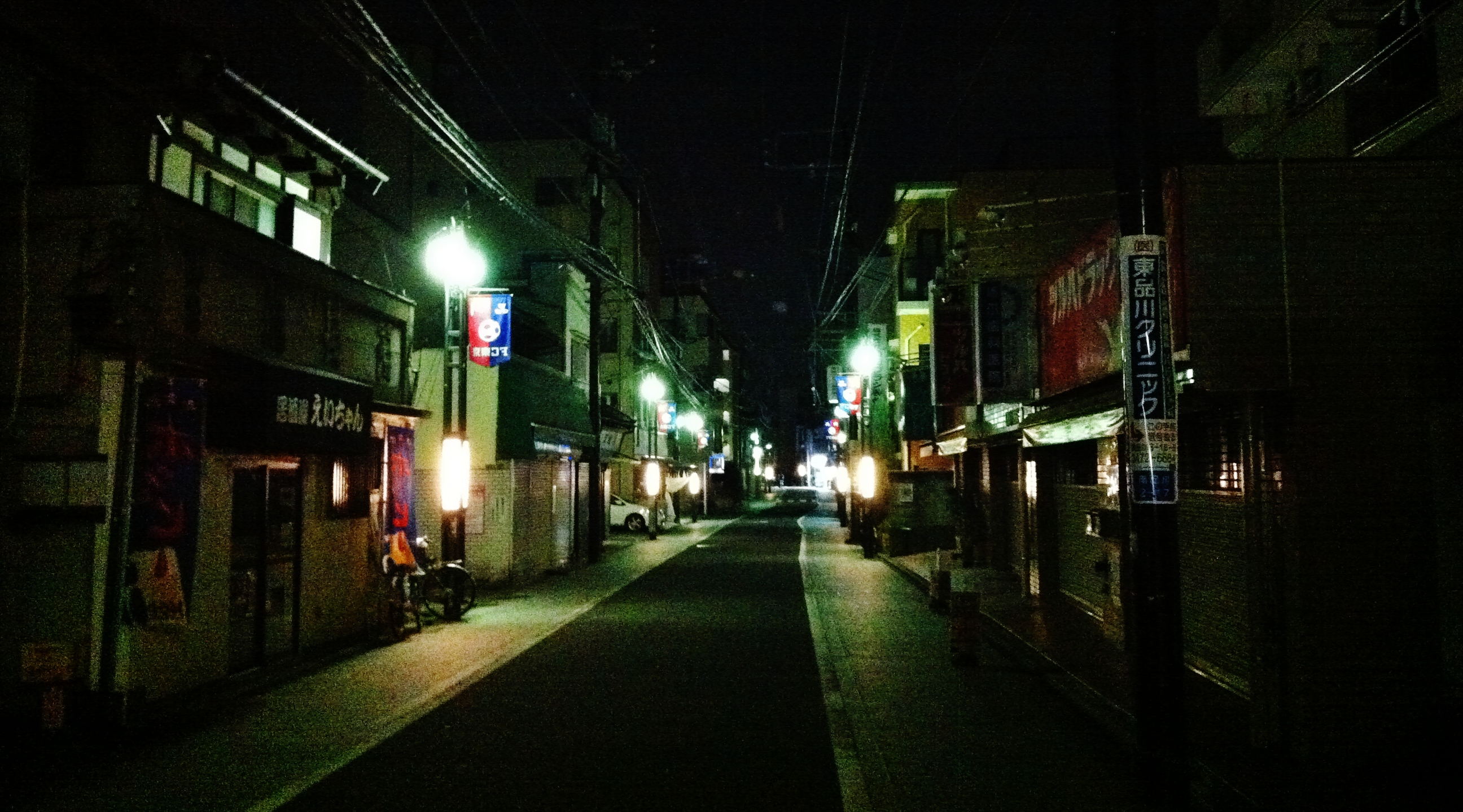The term “traffic calming” refers to measures to slow or otherwise influence the behavior of drivers in order to make roads safer for other drivers, pedestrians, and cyclists. This is achieved through a variety of methods such as speed bumps (aka “sleeping policeman”) or curb extensions. In Japanese, traffic calming is translated as 交通静穏化 or phonetically from the English as トラフィック・カーミング. In Tokyo, many side streets don’t require additional traffic calming features, as the narrowness of such roads seems to be enough to keep speeds down; the perceived safety of Tokyo’s side streets is evidenced by the many people who walk near the middle of the road, moving to the side as cars approach (see previous post: Narrow streets with people walking in the road).

In some cases, more explicit measures are taken to slow the flow of traffic. Here are three notable traffic calming techniques in the Tokyo area:
(1) Fake barriers
An interesting traffic calming measure is known as an “image hump” イメージハンプ or “image bump” イメージバンプ; these are painted images on a street’s surface that resemble 3-D objects such as curbs, barriers, etc. See the following example from Yanaka, Tokyo, (map):


This traffic calming technique is also called 「立体路面標示」 “3D pavement marking” or 「立体減速標示」 “Dimensional deceleration sign”. One company, Sekisui Jushi Corporation (SJC) 積水樹脂株式会社, sells this product with the trade name “Solid Sheet” 「ソリッドシート」. SJC’s 2012 Annual Report describes their product as “Sheeted thermoplastic road markings.”
See the following image hump examples from Shiba 2-chome, Minato-ku, Tokyo (map). From certain distances the image humps resemble actual physical curbs; this illusion dissolves when viewed from the side.




More views from the same neighborhood:







(2) Meandering 蛇行 (dakō) road design
Another street calming technique is to modify an otherwise straight road and create an intentionally meandering 蛇行 path; an example from central Yokohama (map):



(3) “Visual sidewalks”
I refer to the last example as “visual sidewalks”. These are designated walking paths that are at the same elevation as the road surface and are not separated by any curbs or barriers. These paths can be painted (often green) or can be paved with bricks or a different material from the main road material. Here is an example from Toshima-ku (map):

Example from the path of the old Tokaido road, south of Shinagawa. (See: Haneda sanpo! (Walking to Haneda Airport) 羽田空港への散歩)

(4) Other examples:
Traffic calming project on the outskirts of Komae Station 狛江駅:




See also this example from Minato-ku (Google Streetview)
See also:
- Japanese Wikipedia: 交通静穏化 (traffic calming)
- Article about image humps (Japanese)
- PR article about the “Solid Sheet” product: ソリッドシート 立体に見える標示
- The ten cleverest ways to get drivers to slow down
- Traffic calming (English Wikipedia)
- “The long and winding road that leads to “traffic calming” in Japan” Hiroyuki Imai, 2005 (PDF)
- Trends and Present Situation of Road Traffic Accidents
Glossary:
- こぶ (kobu) = hump
- 縁石 (enseki) = curb, curbstone
[…] Traffic calming in Tokyo 交通静穏化 […]
LikeLike
[…] -3D錯視的假分隔島-讓道路變得蜿蜒-人行道以不同顏色與塗料區隔等方式-或組合以上。請參考:Traffic calming in Tokyo 交通静穏化 […]
LikeLike